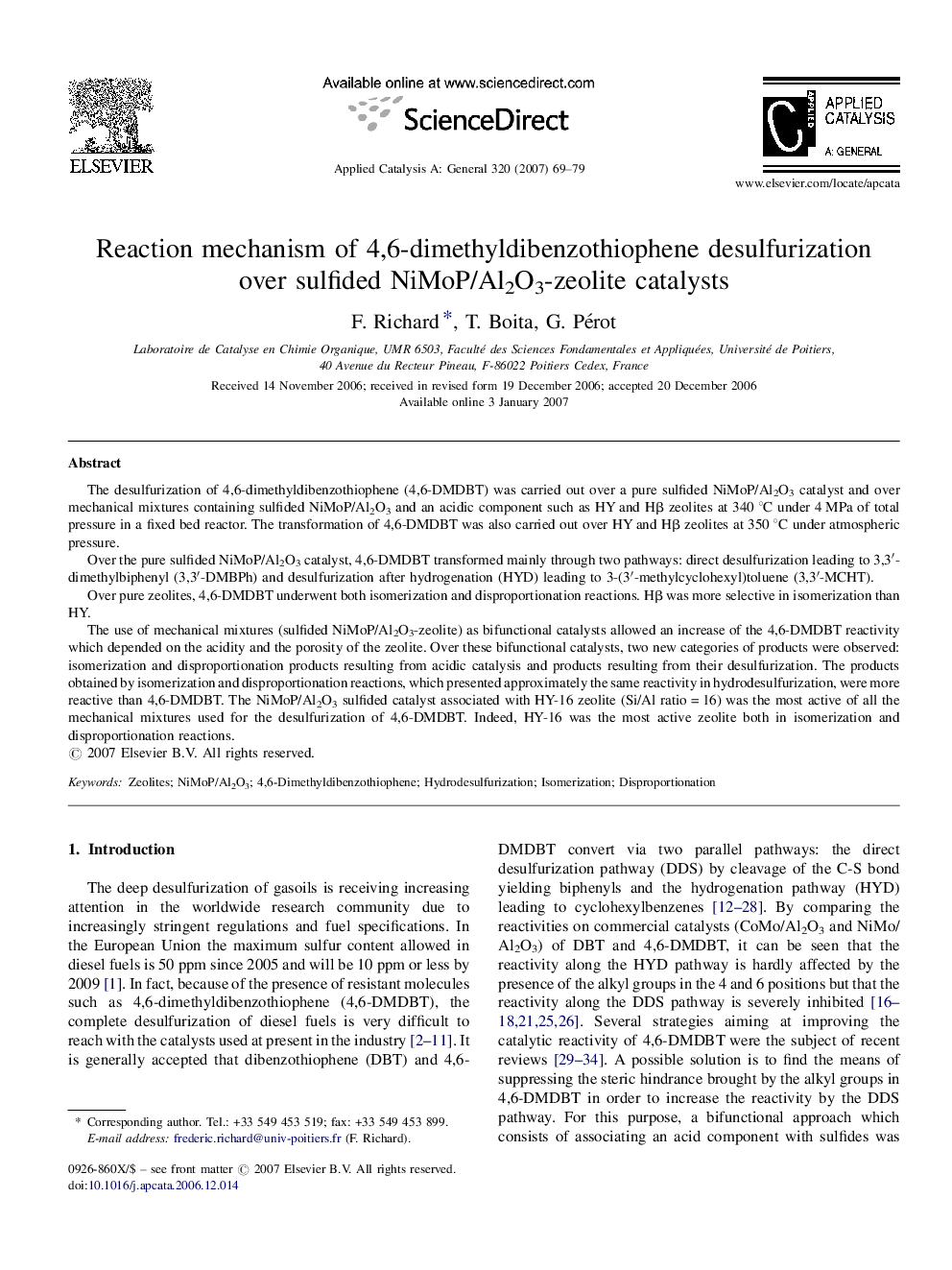| Article ID | Journal | Published Year | Pages | File Type |
|---|---|---|---|---|
| 44420 | Applied Catalysis A: General | 2007 | 11 Pages |
The desulfurization of 4,6-dimethyldibenzothiophene (4,6-DMDBT) was carried out over a pure sulfided NiMoP/Al2O3 catalyst and over mechanical mixtures containing sulfided NiMoP/Al2O3 and an acidic component such as HY and Hβ zeolites at 340 °C under 4 MPa of total pressure in a fixed bed reactor. The transformation of 4,6-DMDBT was also carried out over HY and Hβ zeolites at 350 °C under atmospheric pressure.Over the pure sulfided NiMoP/Al2O3 catalyst, 4,6-DMDBT transformed mainly through two pathways: direct desulfurization leading to 3,3′-dimethylbiphenyl (3,3′-DMBPh) and desulfurization after hydrogenation (HYD) leading to 3-(3′-methylcyclohexyl)toluene (3,3′-MCHT).Over pure zeolites, 4,6-DMDBT underwent both isomerization and disproportionation reactions. Hβ was more selective in isomerization than HY.The use of mechanical mixtures (sulfided NiMoP/Al2O3-zeolite) as bifunctional catalysts allowed an increase of the 4,6-DMDBT reactivity which depended on the acidity and the porosity of the zeolite. Over these bifunctional catalysts, two new categories of products were observed: isomerization and disproportionation products resulting from acidic catalysis and products resulting from their desulfurization. The products obtained by isomerization and disproportionation reactions, which presented approximately the same reactivity in hydrodesulfurization, were more reactive than 4,6-DMDBT. The NiMoP/Al2O3 sulfided catalyst associated with HY-16 zeolite (Si/Al ratio = 16) was the most active of all the mechanical mixtures used for the desulfurization of 4,6-DMDBT. Indeed, HY-16 was the most active zeolite both in isomerization and disproportionation reactions.
Graphical abstractThe desulfurization of 4,6-dimethyldibenzothiophene (4,6-DMDBT) was carried out over a sulfided NiMoP/Al2O3 catalyst and over mechanical mixtures containing NiMoP/Al2O3 and an acidic component such as HY and Hβ zeolites at 340 °C under 4 MPa of total pressure. The use of mechanical mixtures (NiMoP/Al2O3-zeolite) as bifunctional catalysts allowed an increase of the 4,6-DMDBT reactivity which depended on the acidity and the porosity of the zeolite.Figure optionsDownload full-size imageDownload as PowerPoint slide
